GW Welcomes Three New Deans
Business, education, and public health deans mark new academic era.
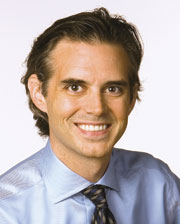
Doug Guthrie
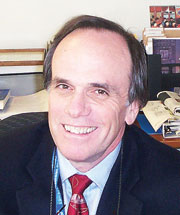 Michael J. Feuer
Michael J. Feuer

Lynn R. Goldman
The School of Business, the Graduate School of Education and Human Development, and the School of Public Health and Health Services are welcoming new deans this fall.
The School of Business' new dean is Doug Guthrie of New York University's Leonard N. Stern School of Business. An expert in the fields of management, leadership, corporate governance, and economic reform in China, Dr. Guthrie has taught at Harvard Business School, INSEAD, and the graduate schools of business at Stanford University, Columbia University, and Emory University. Fluent in Mandarin Chinese, he studied abroad in Taipei, Taiwan, during his undergraduate years and conducted his doctoral research in Shanghai, China. His dissertation research was recognized with the American Sociological Association's national award for the top dissertation in the field in 1997.
"I am thrilled about joining the GW community. At the School of Business we will be continuing the process of building a business school that truly stands at the center of business, politics, and society," Dr. Guthrie says. "With the advantages of the Washington, D.C., community, we plan on making this a school that educates future leaders in a way that no other business school can. It is going to be a business school that is different than any other."
GSEHD will be led by a former leader at the National Research Council of the National Academies, Michael J. Feuer. Dr. Feuer served as the executive director of the Division of Behavioral and Social Sciences and Education at the National Research Council of the National Academies, where he was instrumental in shaping the National Academies' prominent role in education. He previously served as a senior analyst at the Congressional Office of Technology Assessment, has held faculty positions at Drexel and Georgetown universities, and has been a senior adviser to a number of foundations and educational institutions in the United States, Europe, and Israel.
"I hope to help GSEHD become an even more influential force at the frontiers of education research, policy, and practice at a time when the nation's eyes are so sharply focused on the future of learning and human development," Dr. Feuer says.
Lynn R. Goldman, a pediatrician, epidemiologist, and professor at Johns Hopkins University, was named dean of SPHHS. Dr. Goldman comes to GW after serving as professor of environmental health sciences at Johns Hopkins University, principal investigator for Johns Hopkins National Children's Study Center, and dual principal investigator for the National Center of Excellence for the Study of Preparedness and Catastrophic Event Response. In 1993, Dr. Goldman was appointed by President Bill Clinton to serve as assistant administrator for the Environmental Protection Agency's Office of Prevention, Pesticides and Toxic Substances. At the EPA she promoted children's health issues and furthered the international agenda for global chemical safety.
As dean, Dr. Goldman plans to build on the connections GW already has in place with federal agencies and international institutions in D.C.
"Washington, D.C., is a laboratory for public health practice," Dr. Goldman says. "It has all of the typical problems we see both across the country and worldwide, including a number of urban health issues and health disparities."
The deans join George Washington just as Steven Lerman, GW's new provost and executive vice president for academic affairs and A. James Clark Professor of Civil and Environmental Engineering, begins his tenure. Lerman is the university's second-in-command and chief academic officer. The establishment of Lerman's position has created a single point of accountability, immediately below the president, for all academic and student-related programs.
Football Fever
As South Africa reverberated with World Cup energy, students found lessons in the noise.
 Among the millions who filled South African stadiums this summer for the World Cup was a cluster of Colonials venturing abroad for hands-on lessons about the HIV/AIDS epidemic and the tricky business of pulling off a worldwide sporting event.
Among the millions who filled South African stadiums this summer for the World Cup was a cluster of Colonials venturing abroad for hands-on lessons about the HIV/AIDS epidemic and the tricky business of pulling off a worldwide sporting event.
"Being part of this experience was unparalleled," says rising junior Jake Miner, who went to South Africa through his work with the Grassroot Project, an HIV/AIDS education program for middle school students in D.C., which has one of the nation's highest rates of infection. As much as Mr. Miner enjoyed the World Cup matches—and he took in 12 of them—he confides: "To be honest, [this project] made going to South Africa worth it."
Along with two newly minted GW alumnae (Elizabeth Hillin, BA '10, and Emily Gower, BS '10), four Georgetown University students, and one from Howard University, Mr. Miner helped introduce nine D.C. kids to their video pen pals from Soweto, in metro-area Johannesburg, who had participated in a similar sports-based education program called Grassroot Soccer.
After a shy start—"the initial meeting," Mr. Miner says, "was awkward and quiet"—the exuberant South African kids drew out their D.C. counterparts.
Both groups grasped the weight of the HIV/AIDS epidemic, he says, but bringing them together emphasized its global realities. "All of a sudden," he recalls, "the scope of HIV/AIDS became painstakingly real when peers from halfway across the world are standing in front of you."
Together the preteens sang and danced, toured the nation, and learned. A lot.
Volunteering for a day at an orphanage for children whose lives were affected by the disease, Mr. Miner recalls that both groups "matured that day and became the role models we had kind of taught them how to be."
"I remember being at the first meeting for planning this trip back in January—at which point we had negative revenue because we had just bought pizza—with a $50,000 fundraising goal staring us in the face," he says. "At that point the trip was just a dream...I am very privileged to have been part of the eventual reality."
Separately, 15 GW School of Business graduate students also were in South Africa, learning what it takes to pull off an event of planetary proportions.
Under the guidance of Lisa Delpy Neirotti, associate professor of tourism and sports management, the class met with event executives and corporate sponsors to examine the social and economic impact of the World Cup as part of a three-credit course. They also were tasked with collecting 50 surveys each from English-speaking spectators to track consumer behavior, motivation, and spending.
And what better vantage point to study the World Cup than from the eye of the storm?
"The atmosphere at the games is bonkers," graduate student Ben Schwartz says.
The students met with sponsors, including Sony and Coca-Cola, as well as with executives from FIFA (soccer's governing body) and were "able to ask questions regarding our research in both corporate social responsibility and the future event objectives in South Africa beyond the World Cup," says Mr. Schwartz.
Off the field and out of meeting rooms, their days were filled with safaris, city tours, and educational activities. The country is "beautiful," Mr. Schwartz says, "with a wealth of culture and tradition."
"South Africa is a lot more Western than I anticipated," Erica Juliano says. "There have been so many times that I have had to remind myself that I am in Africa. My impression of the country is completely different than the one with which I came."
— Julia Parmley and Danny Freedman
Architects Offer Vision for Science and Engineering Complex
Plans for a proposed science and engineering complex began to take shape this summer, with architects and GW officials envisioning a state-of-the-art center to help usher in an era of collaborative research focus at the university.
In a June report, Philadelphia-based Ballinger Architects laid out plans for a structure that would bring under one roof the offices of eight departments that currently are spread across 12 buildings—biology, chemistry, physics, and hominid paleobiology in the Columbian College of Arts and Sciences; and civil and environmental engineering, computer science, electrical and computer engineering, and mechanical and aerospace engineering in the School of Engineering and Applied Sciences. With eight levels of programmed space above ground and two below, and roughly 290,000 of net assignable square feet, the building would nearly double the square footage currently used by those departments. The Board of Trustees will vote on the project at its October meeting and, if approved, the university could break ground next year.
"This is more than a building," says Nelson Carbonell, BS '85, vice chair of the board. "This is really about something bigger and more significant in our history that will greatly affect our standing as an institution."
"This new endeavor would put GW in a completely different position 10 years from now," he says, "impacting the students and faculty we can recruit, the discoveries they can make, and the funding and partnerships we can attract to George Washington."
The building would be located on the site of the University Parking Garage (spanning between 22nd and 23rd streets between Eye and H streets). A typical floor would combine areas for research and teaching, as well as breakout spaces. The facility also would include 300 to 400 underground parking spaces and a retail venue on the ground floor.
GW President Steven Knapp says the complex, if approved, would be "not only an extraordinary place to do research but an exciting place for our students to work with faculty and experience the thrill of discovery."
The Ballinger Co. has been selected as the architect for the proposed building, along with local partner Hickok Cole. Clark Construction was chosen as the pre-construction consulting contractor, and Boston Properties is serving in a consulting role as project manager.
GW, Smithsonian Announce Expanded Partnership
GW and the Smithsonian Institution have laid the groundwork for an expansion of a longstanding partnership in scientific endeavors and education.
The memorandum of understanding, announced by the heads of both institutions at a formal signing ceremony in July, outlines plans for a collaborative program in museum studies, broadening relationships between the Smithsonian and the GW departments of biology, anthropology, and American studies, and for a Smithsonian fellowship for GW students.
An "opportunity fund" also will be established to support collaborative research projects.
Many of the specific details will be decided by a joint advisory committee.
"This agreement builds on a century of partnership," says GW President Steven Knapp, "and will enhance the contribution both institutions make to the knowledge, education, and cultural enrichment of the American public and visitors to Washington from around the world."
Among the myriad existing partnerships: several members of the faculty, students, and alumni helped create the new Hall of Human Origins at the Smithsonian National Museum of Natural History (See A Human Family Reunion); GW's American Studies department has had a formal relationship with the National Museum of American History for four decades; the Department of Fine Arts and Art History partners with the Hirshhorn Museum and Sculpture Garden; and there have long been ties between GW's anthropology and biology departments and the National Museum of Natural History.
"This MOU lets us energize our relationship and establish additional partnerships with greater ease and flexibility, advancing research and education for another 100 years," says Wayne Clough, secretary of the Smithsonian Institution.
Dr. Clough notes that of the 1,200 interns at the Smithsonian over the past two years, 400 have been GW students.
"They enrich us," he says. "Hopefully some will come back to work here."
$20 Million Grant Focuses on Fighting Childhood Diseases
A joint institute of GW and Children's National Medical Center has been awarded $20 million by the National Institutes of Health to help speed the transition of scientific discoveries into new therapies and health care policies.
The collaborative Clinical and Translational Science Institute was created in 2008 with three main areas of focus: childhood diseases (such as cancer, birth defects, developmental disabilities, and asthma); childhood diseases that persist into adulthood (such as congenital heart disease, cystic fibrosis, and muscular dystrophy); and adult diseases that begin in childhood and worsen or develop with age (such as hypertension, type 2 diabetes, and obesity).
Translational science refers to the process of translating findings from the laboratory into treatments that can be useful to patients and have an impact on broader communities.
The grant money, along with contributions from both sides, will allow the university and Children's National to more effectively share and leverage resources. A scientist working to develop a vaccine, for example, will be able to more easily tap the know-how of a biostatistician, or a clinical researcher at Children's National, or a health policy expert at the School of Public Health and Health Services who is linked through the grant consortium.
"Both Children's National and The George Washington University have long invested significant resources in investigating and understanding the health needs of the children and families of metropolitan Washington," says Jill Joseph, principal investigator of the grant and director of the institute at Children's National.
"The families of our area, and across the country, have already benefited from what we've learned about better clinical treatments and improved community education for common diseases like asthma," she says. "We look forward to even greater breakthroughs in providing that care, now bolstered by new research collaborations with consortium institutions."
The July announcement of the five-year grant to the Clinical and Translational Science Institute, housed at Children's National, marked the first time the NIH's Clinical and Translational Science Award had been given directly to a children's hospital. The institute joins a nationally renowned consortium of research centers that have won CTSA funding from the NIH's National Center for Research Resources.
"Expanding our translational research and development activities, both within the different components at GW and with Children's National Medical Center, will provide new educational opportunities for young investigators and deliver cutting-edge modalities for patients," says Peter Hotez, Walter G. Ross Professor and chair of GW's Department of Microbiology, Immunology and Tropical Medicine, who is leading the GW side of the initiative.
The effort also includes educational and training elements for researchers, including GW's launch in fall 2011 of a Master of Science in Health Science degree with a concentration in clinical and translational research, as well as a certificate program in the same field. The university also is planning a summer program geared toward career development for health care workers and researchers, and another for high school students, which is intended to foster an early interest in research careers.
NIH Grant to Fund AIDS Research Center in D.C.
The National Institutes of Health has awarded an approximately $3 million grant to fund a Developmental Center for AIDS Research in the nation's capital.
The initial five-year, multi-institutional effort is being led by Alan E. Greenberg, MD '82, GW professor of epidemiology and biostatistics in the School of Public Health and Health Services. The aim is to unite researchers from across the city and develop the next generation of HIV/AIDS investigators in D.C., which has one of the nation's highest rates of infection.
The $3 million grant over the next five years will establish the District of Columbia Developmental Center for AIDS Research (DC D-CFAR), which will provide scientific leadership and institutional infrastructure to promote HIV/AIDS research.
The researchers who were instrumental in developing the grant proposal are HIV/AIDS experts from The George Washington University, Children's National Medical Center, Georgetown University Medical Center, Howard University, and the DC Veterans Affairs Medical Center, with the support of investigators from numerous community-based clinics throughout Washington.
The grant will enable the D.C. consortium to support new HIV/AIDS research through pilot grants, access to core research services and facilities, and mentorship by senior scientists to enhance the ability of junior and minority researchers to establish themselves as independent NIH-funded investigators. The overall goal is to establish a full CFAR following the initial five-year funding period.
Currently, there are 20 CFARs located at academic and research institutions throughout the United States.
Seventeen are standard CFARs, and three are Developmental CFARs. The CFAR program emphasizes the importance of interdisciplinary collaboration and is jointly funded by seven NIH institutes: the National Institute of Allergy and Infectious Diseases; the National Cancer Institute; the National Heart, Lung and Blood Institute; the National Institute on Aging; the National Institute of Child Health and Human Development; the National Institute on Drug Abuse; and the National Institute of Mental Health.
Dr. Greenberg is co-founder and co-director of the GW HIV/AIDS Institute.
Buergenthal Retires from Court, Returns "Home" to GW Law
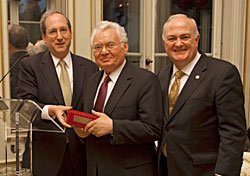
Dean Frederick M. Lawrence (left) and President Steven Knapp led a GW delegation honoring Judge Buergenthal at The Hague. The international human rights law expert is retiring from the International Court of Justice this fall and returning to GW.
Anthony Donner
After a decade of service as the American judge on the United Nations' International Court of Justice in The Hague, Professor Emeritus Thomas Buergenthal will be retiring from the bench and returning to teach at GW this fall.
The GW Law School made the announcement in May, during a weeklong series of events in The Hague and Paris that drew leading scholars of international law from GW and across Europe, as well as diplomats, practitioners, GW alumni, and students.
"Judge Buergenthal is one of the great figures in international law and human rights law of our time," said Law School Dean Frederick M. Lawrence, who was in attendance, along with GW President Steven Knapp. "He is respected the world over as an advocate for peace and justice, and we are exceedingly grateful that he is returning to GW Law to help shape future generations of legal practitioners on the global stage."
One of the world's foremost experts in international human rights, Judge Buergenthal survived two Nazi concentration camps as a child before immigrating to the United States at age 17.
Judge Buergenthal was the first U.S. citizen elected to the U.N. Human Rights Committee and has served on various U.N. commissions over the years. He also was the only U.S. judge on the Inter-American Court of Human Rights, a judicial body of the Organization of American States, and later the court's president.
His 2009 book, A Lucky Child: A Memoir of Surviving Auschwitz as a Young Boy, has been translated into more than
10 languages.
At GW Law School, which he referred to as "home" in remarks during the festivities in Europe, Judge Buergenthal will resume his position as the Lobingier Professor of Comparative Law and Jurisprudence and teach international law.
Judge Buergenthal, who co-wrote the first international human rights law textbook in the United States, noted in an interview that compliance with human rights law now is greater "than ever before," though problems remain.
"We're very slow learners," he says. "We thought after the Holocaust that there would never be genocide, but it has come again. It helps that we have human rights institutions, the Internet and television, as we now hear about violations in real time, which often helps to prevent or reduce the effects of violations. Progress has been made, but it's not enough," he says, "and I'm not sure it will ever be enough."
—Jamie L. Freedman and Julia Parmley
School of Nursing Launches
A stand alone school of nursing has been launched at GW.
Forged from the Department of Nursing Education in the School of Medicine and Health Sciences, the new GW School of Nursing was approved by the Board of Trustees in May and opened July 1 with more than two dozen faculty members. The school is housed on both the Foggy Bottom and Virginia Science and Technology campuses.
The school's founding dean is Jean Johnson, who had served as GW's senior associate dean for health sciences. Ellen Dawson, who had been chair of GW's Department of Nursing Education, will be the school's senior associate dean for academic affairs.
A public ceremonial opening is planned for next summer.
"We have taken nursing as far as we can as a department," Dr. Dawson says. "All of the top nursing programs in the country are in schools of nursing."
Much of the infrastructure for the school was already in place. The department received permission to grant degrees in 2004 and began offering a master's in nursing the next year. In 2007, the department launched its Doctor of Nursing Practice program, and in 2009 it created a Second Degree Bachelor of Science in Nursing program.
"People ask me, 'Why now?'" Dr. Johnson says. "It's a unique moment with health care reform, GW's capital campaign, the shortage of primary care professionals, and the economy."
As access to health insurance coverage is extended to tens of millions under health care reform, Dr. Johnson says there could be many opportunities for nurses in primary care, including nurse practitioner-led clinics.
Demographics, too, will likely keep nursing as vital as ever. "With the aging population, nursing becomes increasingly important—not to cure chronic illness but to improve quality living," Dr. Johnson says. "That is what nursing is about."
Urban Gardening Takes Root at GW
Food and foliage make campus plots more sustainable

This bibb lettuce is one of several plantings in GW's GroW Community Garden on H Street between 23rd and 24th streets
William Atkins
"�Our welfare and prosperity depend upon the cultivation of our lands and turning the produce of them to the best advantage." —George Washington, 1788
A cornucopia of fruits, vegetables, and herbs is ripe for harvest in GW's new student-run gardens. Started by the Food Justice Alliance, two GroW Gardens—a productive food plot in Foggy Bottom and an ultra-native patch in Mount Vernon—have begun to produce and benefit local urban ecology.
Foggy Bottom's GroW Community Garden, on H Street between 23rd and 24th streets, has nine triangular raised bed planters filled with sweet and hot peppers, summer squash, zucchini, eggplant, collards, kale, a half-dozen varieties of tomatoes, and herbs such as sage, basil, lemon basil, and mint. Spring crops included sugar snap peas and Swiss chard. Flowers, such as marigolds and salvia, attract butterflies and other beneficial insects. The alliance also planted young fruit trees—fig, persimmon, pawpaw, serviceberry—that will produce fruit in future years.
A handful of students, overseen by garden fellow and GW rising senior Melissa Eddison, water and maintain the garden during the week. Each Saturday, more volunteers—including community members—join in for bigger garden projects and harvesting. Some 80 percent of the garden's harvest goes to the local nonprofit Miriam's Kitchen, which provides meals for the homeless.
GroW on the Vern is a more structured garden program that uses student volunteers from the eco-friendly Pelham Hall's Green Earth living and learning program—which teaches urban sustainability—as well as faculty and staff gardeners.
This garden has a twist: "More than 90 percent of plants in the Mount Vernon garden are native to the D.C. and Northern Virginia area," says Ms. Eddison, who describes this plot as a "smart garden" for its use of plants to naturally restore soil nutrients and ecological processes.
Many of the Vern garden's plants are unconventional: There's a native variety of plum tree, and a native variety of strawberries helps restructure the soil. Butterfly weed bears a fiery orange blossom that attracts its namesake insect. Adam's needle, a species of yucca, absorbs excess salt used on roadways in winter. Bayberry fixes nitrogen in the soil, making the nutrient more available for roots.
A native garden such as this resembles the garden that George and Martha Washington would have planted. "He knew the folklore of the time and what each plant was good for," Ms. Eddison says. That field of knowledge has gone by the wayside, she says, but some gardeners are beginning to realize the benefits of planting native varieties—from easier garden maintenance to a healthier local ecosystem.
"There's value to planting local, historic plants," Ms. Eddison says. "And it takes a lot of research to do it right."
—Carrie Madren
Green Goodbyes
 If GW's award-winning Green Move Out program seemed like an unbeatable success last year, hang on to your recycling bin: The 2010 effort collected a record-breaking mountain of clothes, books, laundry detergent, Metro farecards—anything still usable—that was diverted from the landfill to local charities when students moved out of the residence halls at the end of the academic year.
If GW's award-winning Green Move Out program seemed like an unbeatable success last year, hang on to your recycling bin: The 2010 effort collected a record-breaking mountain of clothes, books, laundry detergent, Metro farecards—anything still usable—that was diverted from the landfill to local charities when students moved out of the residence halls at the end of the academic year.
Sophomore Njeri Kimani, a student coordinator for the event, sums up her sentiment with a quote from 17th-century historian and preacher Thomas Fuller: "We never know the worth of water until the well is dry."
"I don't want that to be the legacy that we leave behind for future generations," she says.
Moving mountains:
79,994: The total amount, in pounds, of items collected; an increase of nearly 30,000 pounds—almost 60 percent—from last year.
4,778: The amount of food, in pounds, that was donated; an increase of 75 percent from last year.
3,478: The number of bags filled with clothing and other items that were donated; up 60 percent from last year.
George Welcomes…
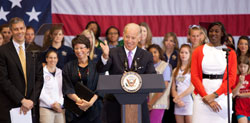
Vice President Joe Biden announced a policy change to Title IX at GW April 20 that strengthens the provision, which is responsible for creating more equity between men's and women's athletic programs on campuses that receive federal funding. The vice president was joined by Secretary of Education Arne Duncan and Valerie Jarrett, chair of the White House Council on Women and Girls and senior adviser to the president.
William Atkins
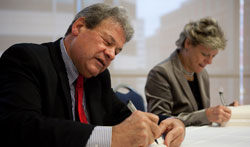
Veteran journalists Steven Roberts, J.B. and Maurice C. Shapiro Professor of Media and Public Affairs, and wife Cokie Roberts, ABC News political commentator and a contributing senior news analyst for National Public Radio, discussed their new books March 15 at GW's Marvin Center. Cokie Roberts' book, Ladies of Liberty: The Women Who Shaped Our Nation, is a follow-up to her best-selling book about prominent women in American history, Founding Mothers: The Women Who Raised Our Nation. Steven Roberts' new book, From Every End of This Earth: 13 Families and the New Lives They Made in America, focuses on immigration through families' stories.
Jessica McConnell
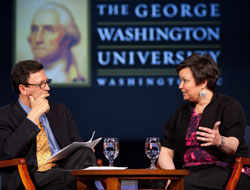
Environmental Protection Agency Administrator Lisa P. Jackson and a panel of environmental experts discussed climate change legislation at GW April 20. The event, "A Time To Act? Next Steps for a Climate Bill," was part of Planet Forward, an online-driven television project that brings together citizens and experts.
Jessica McConnell
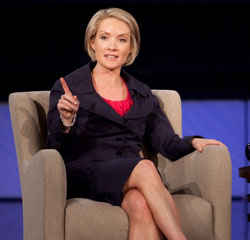
Dana Perino, White House press secretary for President George W. Bush, kicked off the Graduate School of Political Management's 2010 Distinguished Speaker Series March 22. Ms. Perino told stories from the press briefing room at the White House and shared lessons she learned while working for the president. This fall, Ms. Perino will be an adjunct faculty member in GW's Graduate School of Political Management.
William Atkins
|
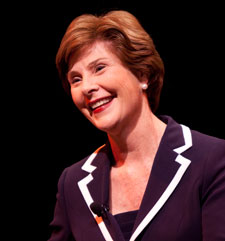
Former first lady Laura Bush stopped at Lisner Auditorium May 6 to discuss her new memoir, Spoken from the Heart. While chatting with Emmy Award-winning journalist Cokie Roberts, the former first lady talked about her courtship with George W. Bush, having a political family, and significant experiences in her life.
Jessica McConnell
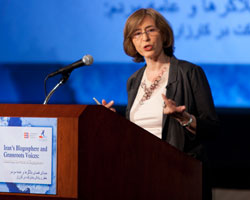
Author of Reading Lolita in Tehran, Azar Nafisi talked about her personal experiences as a woman in Iran and how change happens in a totalitarian society as the keynote speaker at a conference co-sponsored by GW's Institute for Public Diplomacy.
Jessica McConnell
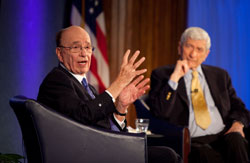
Rupert Murdoch, chairman and CEO of News Corp., was the featured guest on The Kalb Report April 6 at the National Press Club. Host and veteran journalist Marvin Kalb interviewed the media mogul about the future of journalism.
Jessica McConnell
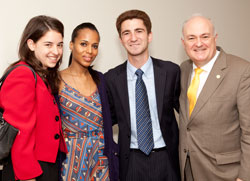
Actress Kerry Washington, BA '98, (second from left) stops for a photo with former Student Association President Julie Bindleglass, Student Association President Jason Lifton, and University President Steven Knapp at the Board of Trustees meeting May 14. Ms. Washington is among the nine newest members of the Board of Trustees (see Board of Trustees Elects New Members).
Jessica McConnell
|
Board of Trustees Elects New Members
In May, The George Washington University Board of Trustees elected the following nine members, who began their service July 1, 2010.
Christopher Bright, MPhil '03, PhD '06, is an adviser to Rep. Darrell Issa (R-Calif.) on national security matters pending before the Oversight and Government Reform Committee in the U.S. House of Representatives. Before coming to Capitol Hill, he served as the Commonwealth's assistant secretary of commerce and trade in Virginia. He is a specialist on American foreign policy.
Stuart Kassan, MD '72, is a clinical professor of medicine at the University of Colorado Denver School of Medicine and chief medical officer of Infusion Center of Denver and RV Infusion Partners. He is a member of the Dean's Council and has served as president of the Medical Alumni Association of the GW School of Medicine and is presently a member of the board of directors of the GW Alumni Association.
J. Richard Knop, JD '69, is co-founder of the Windsor Group LLC, providing merger and acquisition support for the government and defense contract industry. Mr. Knop is also co-founder of Fed Cap Partners, LLC, a private equity fund. He previously served as the president of GW's Law School Board of Advisors and Government Contracts Advisory Board. Mr. Knop is a registered securities principal.
Peter Kovler, serves as chairman of the board at the Center for National Policy, a non profit, nonpartisan public policy organization dedicated to engaging government leaders with global security policy solutions. Mr. Kovler is director of the Marjorie Kovler Philanthropic Foundation, and chairman of the board of the Blum-Kovler Foundation.
B.J. Penn, MS '80, is the owner of Genesis IV, an executive consulting firm serving the private and public sector. Previously, he served as acting secretary of the Navy and assistant secretary of the Navy and was responsible for formulating policies, plans, and procedures of the Navy and Marine Corps facilities.
Deborah Ratner Salzberg, BA '75, is president of Forest City Washington, a national real estate firm active in property development, management, ownership, and acquisition. Prior to joining Forest City, she was a trial attorney in the Civil Division of the U.S. Department of Justice.
Kerry Washington, BA '98, is an actress who has appeared in more than 50 productions, including The Last King of Scotland and Ray, and has been nominated for numerous awards for her roles in movies, theater, and television. Ms. Washington was a recipient of the GW Alumni Achievement Award in 2008.
George W. Wellde Jr., MBA '76, is a member of Fortress Investment Group's board of directors. Previously, he served as vice chairman of the Securities Division at Goldman Sachs & Co., from 2005 until his retirement in 2008. Mr. Wellde also serves on the Business School Board of Advisors at GW.
Ellen Zane, BA '73, is president and chief executive officer of Tufts Medical Center and the Floating Hospital for Children. She is also an assistant professor in the Department of Medicine, Division of Clinical Care Research at Tufts University School of Medicine.
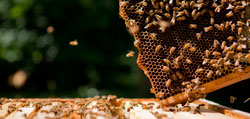
About 120,000 honeybees have taken up residence at the Mount Vernon Campus as part of an effort to promote sustainable food and gardening spearheaded by student organization Food Justice Alliance. The Italian honeybees, which can pollinate thousands of plants every day, are a donation from local beekeeping cooperative Sweet Virginia and arrived on campus June 10. View more photos like this at GW Today's photo galleries, www.gwu.edu/explore/gwtoday, and photo blog, gwtodaypics.blogspot.com.
|
At a Glance
Celebrated Scribes
The English Department added two high-profile wordsmiths to its faculty roster this spring: acclaimed writer Thomas Mallon, who will lead the creative writing program, and Pulitzer Prize-winner Edward P. Jones, who received the fiction award in 2004 for his novel The Known World.
"GW already had a noted creative writing faculty, with nationally and internationally recognized writers," says English Department Chair Gayle Wald, "but the hiring of Tom Mallon and Edward P. Jones really pushes us to the next level."
Green Turns Gold
The newest upperclassmen residence hall at GW has become the first university building in Washington to receive Leadership in Energy and Environmental Design Gold Certification for new construction. Opened in September 2009, South Hall houses 474 fourth-year students in single-bedroom apartment-style living.
From the sustainable bamboo paneling to the low-flow water fixtures, the certified climate-neutral carpet to the white roof, South Hall's design and construction incorporated key LEED standards—set by the U.S. Green Building Council—using new strategies for sustainable site development, water conservation, energy efficiency, and indoor environmental quality. Located at 2135 F Street, N.W., the dorm has an energy performance that is 24.5 percent above the industry standards for residential buildings.
The Next Big Idea
The way Jim Chung sees it, few organizations are able to incubate ideas and deliver innovation as effectively as the creative hive that is a university. "Who knows if we have the next inventor of Facebook or Google walking around?" he says.
As the newly appointed director of the Office of Entrepreneurship, he will be working to foster that creative thinking and shepherd into reality the budding ideas of faculty, students, alumni and even the broader D.C. community.
"When people want to start a company, the goal is to have them think first of GW as a place to come for resources and ideas and talent."
The new department, which includes the existing Office of Technology Transfer, is under the umbrella of the Office of the Vice President for Research.
Top Scholar, Top Rank
Michael Barnett, a renowned Middle East scholar, has been named university professor of international affairs and political science. Only eight members of the faculty hold the title of university professor, GW's highest ranking academic honor.
Arriving in August from the University of Minnesota's Humphrey Institute of Public Affairs, Dr. Barnett is no stranger to campus: His writings have been required readings in some GW classes and, among other connections, he collaborated with Martha Finnemore, director of GW's graduate program in political science, on the award-winning 2004 book Rules for the World: International Organizations in Global Politics.
Websites Revamped
Notice anything new online? All nine GW schools and colleges began shifting this summer to a sleek, unified look that mirrors the university's home page. The move provides a consistent feel across the university and offers improvements to social networking features and blogs.
The upgrade marks the second phase of a web project that began last year with the unveiling of the new home page and the launch of GW's flagship online news publication, George Washington Today. The third phase will bring all other university offices on board.
Asst. Men's B-Ball Coach
He was a college basketball standout (and current record-holder) at the University of Connecticut who went on to play for eight NBA teams in his 15-year professional career. He has also spent a year on camera as an analyst for Comcast SportsNet. Now Donyell Marshall will serve as an assistant coach for men's basketball at GW, replacing Brian Ellerbe.
"We're very fortunate to get a guy of Donyell's experience and name recognition," says men's basketball coach Karl Hobbs. "Because we have a young team, it couldn't come at a better time to bring on someone with his basketball knowledge, and someone who has mentored young players in the NBA, to help develop our team."
Influencing Scientific Outcomes
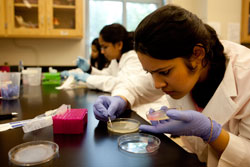
William Atkins
"I feel like it's probably one of the best parts of my summer"—not the kind of words usually used to describe a summer-break science class. But for high schooler Priya Venkatraman and 17 other young women in the GO GIRL program (Genomic Opportunities for Girls in Research Labs) it seemed to be par for the course. The free, weeklong science camp for girls from Loudoun County, Va., Public Schools was launched in 2009 by three female professors from GW's School of Medicine and Health Sciences and the Bernard J. Dunn School of Pharmacy at Shenandoah University. "Being a female scientist does not mean being locked in a dark laboratory 24/7," says Tracey Nickola, one of the Shenandoah University professors. "You can be a scientist and still be a wife and mother. I wanted to educate these young ladies on what scientists and doctors do and the powerful technology that we use in health care and forensics."

 Michael J. Feuer
Michael J. Feuer


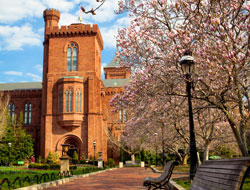


 If GW's award-winning Green Move Out program seemed like an unbeatable success last year, hang on to your recycling bin: The 2010 effort collected a record-breaking mountain of clothes, books, laundry detergent, Metro farecards—anything still usable—that was diverted from the landfill to local charities when students moved out of the residence halls at the end of the academic year.
If GW's award-winning Green Move Out program seemed like an unbeatable success last year, hang on to your recycling bin: The 2010 effort collected a record-breaking mountain of clothes, books, laundry detergent, Metro farecards—anything still usable—that was diverted from the landfill to local charities when students moved out of the residence halls at the end of the academic year.








